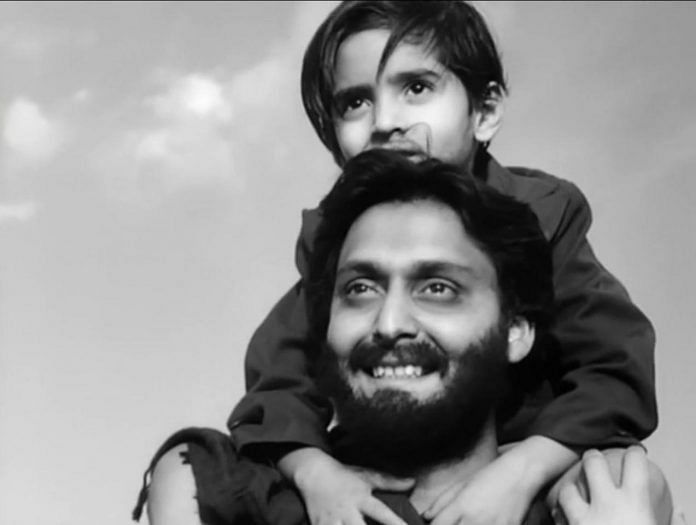As the actor turns 84 today, ThePrint takes a look at the career of Chatterjee who deserves a wider acknowledgement in the country.
The camera zooms into a letter — a letter of recommendation. It says Apu is a “sensitive, conscientious and diligent” person. The camera cuts to Apu’s face. A young, extraordinarily ordinary man with an earnest smile, beams in black and white.
This was Satyajit Ray’s introduction to debutant Soumitra Chatterjee. The year was 1959 and Apur Sansar, the last film in the Apu trilogy, had hit the screens to much success. The film also marked the debut of a 13-year-old Sharmila Tagore.
While Indians at large may recognise the name of Tagore (or Suchitra Sen, or Uttam Kumar), Soumitra Chatterjee is still a largely unknown face outside West Bengal. Perhaps due to the fact that he never ventured into Hindi cinema.
Ray, the master director, made 14 films with Chatterjee, a veteran unto himself.
On his 84th birthday, ThePrint takes a look at the legend who probably deserved a wider acknowledgement in the country.
‘Intellectual’ hero
In the ’60s and ’70s, Uttam Kumar was the face of Bengali cinema, but Soumitra Chatterjee was the hero of the ‘thinking-man’.
All the things that described Apu in the recommendation letter, also applied to Chatterjee. His forte was naturalism — he was a director’s actor.
Born in Calcutta (now Kolkata) in 1935, Chatterjee was a city boy, with aspirations and a penchant for acting. It was through sheer hard work and a wish to excel that he became the hero Bengal needed.
Kumar had panache and charm, but Chatterjee had conviction and malleability.
Early on in his career, he had already worked with most directors that other actors could only wish for.
Chatterjee could be both a niche and a mass hero.
He could and has done do it all — a man struggling to make his marriage of unequals work in Ajoy Kar’s Saat Pake Bandha (1963), a middle class man with dangerous aspirations in Mrinal Sen’s Akash Kusum (1965), the sensitive pack leader in Ray’s Aranyer Din Ratri (1970), the intelligent and thoughtful detective in Joy Baba Felunath (1979), a swimming coach who does not give up in Saroj Dey’s Kony (1986), and a grandfather who is bringing up his grandson in Nandita Roy and Shiboprosad Mukherjee’s Posto (2017).
Over his six-decade long career, he has embodied the typical Bengali middle-class man — sensitive, vulnerable and intelligent.
Also read: Ritwik Ghatak, the celluloid rebel who used cinema as a political tool
The thespian
Chatterjee is a polymath. Apart from the 300 or so films under his belt, he is also a dramatist, poet, writer and painter.
While he started his career acting on stage, Chatterjee returned to it in 1978, after establishing himself as in cinema. His plays, over the years, have received both critical and commercial success.
On stage, he is most famous for his rendition of Shakespeare’s King Lear in Suman Mukhopadhyay’s Raja Lear.
He has also written and directed several plays.
The reluctant award winner
Chatterjee is also fairly outspoken about his opinions. He is known for joining rallies and speaking out — he criticised the 2016 demonetisation exercise — whenever he has felt claustrophobic about the state.
The actor is also famous for his aversion to awards, even though he has won most of them.
In 2012, he received the Dadasaheb Phalke award. But during his heydays, he was snubbed by the National Film Awards. Much later, in 2007, he was awarded the Best Actor for Podokkhep, not one of his best works.
He was awarded the Padma Bhushan in 2004, after having refused the Padma Shree twice.
Thirty years after his mentor Ray, in 2018, he was also given the French Chevalier de la Légion d’honneur, the highest civilian award in France.
Chatterjee is still on screens and in theatres — you can catch him reciting Tagore’s poetry, or acting in a telefilm, or in the black and white monotones of yesteryear’s classics.
Also read: Cats that wink & science of comets: Sukumar Ray’s fantastic world of literature and creatures




I guess you bunch of IDIOTS don’t know about soumitra chatterjee. Grt some knowledgeable people. Lol.